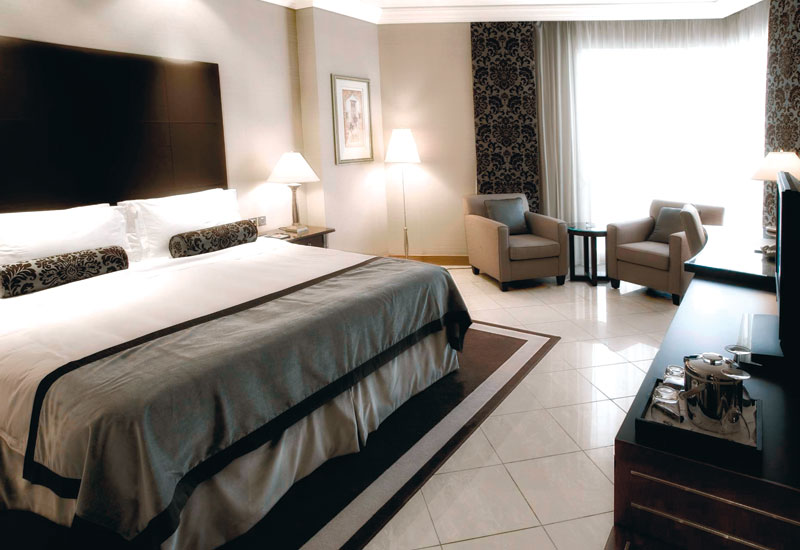Interior designers debate the key issues surrounding their work, from the function versus form debate to the challenges of working within compressed budgets, revealing how their goal is to balance the visions of the hotel owner and operator
Beauty is in the eye of the beholder. If only this was true in the case of hotel creation, where beauty is in the eye of the owner, the operator, the developer, the architect, the interior fit-out contractor, the procurement company, the in-house purchasing team, the head housekeeper — the list goes on.
The role of the interior designer, therefore, is surely to align the visions of all these different partners. And according to the designers Hotelier Middle East spoke with, this can be a lengthy and complicated process — for example, during the six years that Wilson Associates worked on Atlantis, The Palm, the firm worked with more than 30 different contributing consultants.
Wilson Associates principal in charge and design director James Carry comments: “It is important to keep in mind that there needs to be clear communication 100% of the time between all consultants. If issues are not addressed from the start of the project, they will never go away. My advice to owners and operators is to pick their consultants based on team capability, not on a fee, and trust them to execute the vision.”
The “team” factor is crucial when it comes to design, agrees WATG associate vice president Rory Hopkins.
“The culmination of a successful project is bringing the right team members together who share a similar vision and equivalent level of expertise. Integration is done through diligent communication and a willingness to be open to new ideas,” he says.
At Rockwell Group, this process involves the creation of a written narrative at the outset, says managing director of the group’s Middle East office, Chuck Wood.
“Our job is to develop a design concept that functions well, that supports the vision and story of the brand, that works from an economic standpoint, which ultimately builds a strong emotional, memorable and pleasurable connection with the guest or the customer. It’s not always the case that when a project starts there is a clear understanding between an operator and an owner or a developer about collectively what they want to achieve and it’s an important part of the process to map that out in the beginning.

Advertisement
“We do it through producing what we call a written narrative; that is, a story about what the project is, its place, the locale, how it responds and reaches out to the target guest segment and how guests are going to experience the project and brand as they move through it and inhabit it. We use that as a tool with visual exercises to bring everybody together,” says Wood.
However, bringing all the relevant partners together at the appropriate time is not as simple as it sounds, say the designers.
“Good co-ordination is key to good design and unfortunately the interior design is always the one that suffers due to being the last in line when it comes to the fit out,” says Interior Motives MD Julia Dempster.
Aukett Fitzroy Robinson head of interior design Anne Kuzyk admits to experiencing the same problem.
“We are the last consultant to be appointed to the project. In many instances, it is long after the building has been designed by the architect and MEP consultants, and in some cases before a hotel operator has been appointed,” says Kuzyk.
“Interior designers inherit spaces that may not work for a hotel operation, with guest bathrooms that are too small or awkward shaped spaces that cannot fit the requirements of a restaurant. The ideal solution is one practice that has architectural and interior design capabilities, so that the building and interiors may be designed together. This integration is about shared ownership among the entire team for the delivery of the end product,” says Kuzyk. “Our biggest challenge is to blur the line between the hotelier and the hotel owner’s expectations,” she adds — and the earlier this process begins, the better.
Banyan Tree Hotels & Resorts is one example of such shared ownership, as it benefits from its own in-house design firm.
“Banyan Tree has a unique vertically integrated business model which includes hotel and spa management and operations, as well as architectural and interior design through its in-house Architrave Design and Planning. This is something that other hotel groups do not have. As part of this business model, we are able to exercise better control over the quality and consistency of the design standards of our projects, as we continue our global expansion,” says Ho Kwoncjan, senior vice president and managing director, design services of Banyan Tree Holdings Limited, and managing director, project development of Laguna Resorts & Hotels, PCL in Thailand.
But, assuming the right team is in place at the right time and able to weave together the visions of both owner and operator, what issues must designers address when developing a hotel concept? How do they balance practicality with beauty, sustainability with luxury, and quality with cost?
Over the next few pages, interior designers — all of whom have created projects in the Middle East — tackle these issues and reveal trends of the future and their nominations for the world’s best-designed hotels.









 Search our database of more than 2,700 industry companies
Search our database of more than 2,700 industry companies









